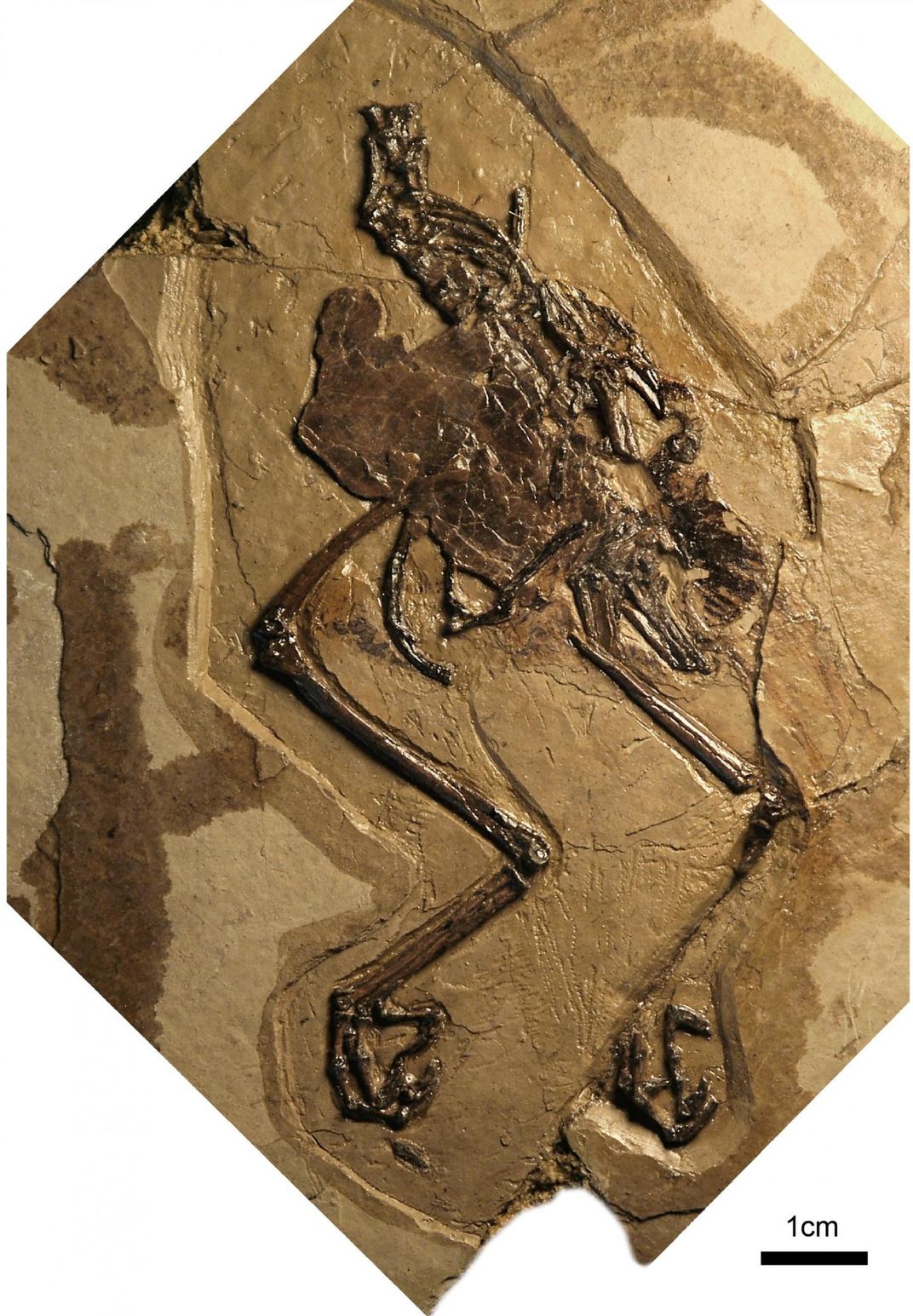First-Ever Fossilized Mother Bird Found With Unlaid Egg
The rare 110-million-year-old bits of shell shine light on the reproduction during the age of dinosaurs
/https://tf-cmsv2-smithsonianmag-media.s3.amazonaws.com/filer/8e/85/8e852c7f-1bbf-4821-bb5d-f0cb062be24a/bird_illo.jpg)
About 110 million years ago, the egg developing inside a mother bird living on the shore of a lake in present-day China got stuck inside her body. She died with the egg still inside her, with the muck of the lake covering her body and preserving the somber scene in perpetuity.
But Michael Greshko at National Geographic reports the bird’s misfortune is science’s gain. The fossil represents the first time an ancient bird has been found with its unhatched egg still in its body, and it’s teaching researchers how modern bird eggs evolved.
The fossil was originally dug up by paleontologists from China’s Institute of Vertebrate Paleontology and Paleoanthropology (IVPP) in the mid-2000s in the Xiagou Formation in the northwest of the country.
It was one of several Cretaceous-era Enantiornithes fossils, which were a type of early bird that coexisted with the dinosaurs, found during those excavations. After the find, researchers put the fossil in storage, noting remnants of an unusual "membrane."
Last year, paleontologist Alida Bailleu, who specializes in studying fossilized soft tissue, arrived at IVPP and began looking through its fossil archives for specimens to investigate. Her team came across the deceased mother bird, which has been indentified as a new prehistoric species called Avimaia schweitzerae. According to a press release, when they extracted a bit of the unknown material, they determined that it was eggshell.
Using a scanning electron microscope, the team analyzed mineral remnants associated with a form of natural waterproofing that is found in the eggshell of birds that partially bury their eggs, a behavior that Enantiornithes researchers have hypothesized about the ancient bird family.
They also found the double layer of paper-thin shell, indicative of the reproductive problem that killed the mother called egg-binding, which occurs when the egg becomes stuck near the cloaca and the shell continues to grow, becoming too thick to ever leave the body. No signs of the embryo in the egg were found in the fossil. The research appears in the journal Nature Communications.

The team also believes they’ve found the presence of medullary bone, a type of temporary bone structure that facilitates calcium storage for eggshell production, in the fossil. Some paleontologists claim they have found this special type of bone in other birds as well as dinosaur fossils, but without the presence of an egg, it's difficult to confirm that it is indeed a medullary bone and therefore establish early evidence of the bone's presence in early avian reproduction. Because the team found the egg and possible medullary bone together, the fossil is an strong example of the link between the medullary bone and how avian reproduction evolved.
The new fossil’s namesake Mary Schweitzer, a paleontologist at North Carolina State University who was not involved in this study, tells Greshko the link is strong. Schweitzer was part of a team that found another potential medullary bone in T. Rex in 2005.
“At this point, what else can it be?” Schweitzer says. “I'd like to see chemistry done, and maybe eventually they will get to that ... but the preponderance of evidence supports it being medullary bone.”
Paleontologist Michael Pittman of the University of Hong Kong, who studies avian flight origins and is not associated with the new study, tells George Dvorsky at Gizmodo that this new fossil is an important one.
“This Mesozoic bird specimen is the only one I know of that preserves both an egg and the medullary bone,” Pittman says. “It provides the best evidence yet of a female early bird that was reproductively active. The fossil also provides invaluable insight into the reproduction of Enantiornithines, a diverse group of early birds that dominated the Cretaceous and hatched ‘out of the egg running’ and perhaps ready to fly too.”
Greshko at National Geographic reports there’s still more we could learn from the egg by studying its molecular structure, which could indicate what kind of texture and color the eggs had. With that information, researchers may be able to learn what kind of habitat the bird nested in.